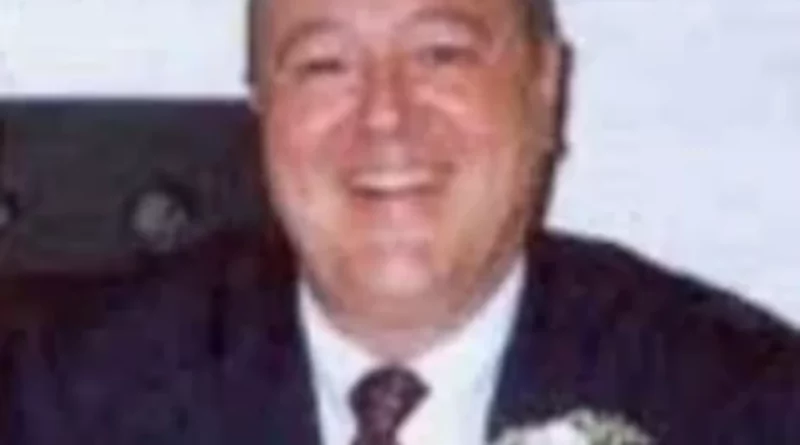Patrick Servino Murdered at Home in Tempe Arizona
Patrick Servino was a 54-year-old Tempe, Arizona man whose life was violently cut short in a baffling, unsolved homicide on the evening of July 2, 2003. The killing occurred in broad daylight—early evening—right in the doorway of his own home, where he was performing ordinary, caring duties. The case has remained cold for decades, with few concrete leads, no arrests, and a family left with lingering questions about motive, perpetrator, and justice.
Background on Patrick Servino
Servino was known in his community as a church-involved, upright man with no criminal history. He lived in Tempe and was, at the time of his death, actively caring for his blind ex–mother-in-law—demonstrating a sense of responsibility and compassion that those close to him cited as part of his character. Months leading up to his death, his home had been targeted with vandalism: someone spray-painted “PS Sells Drugs” on his house and threw a rock through a window. Despite the overt implication of drug involvement by whoever did the vandalism, investigators found no corroborating evidence that Servino had any ties to drug activity. The graffiti and broken window added a layer of confusion and possible misdirection to an already murky situation.
In March 2003, just a few months prior to his death, Servino had remarried. The timing has prompted speculation among some observers about whether personal relationships, domestic disputes, jealousies, or targeted malice might have played into the motive—but nothing definitive ever emerged publicly. His public standing and lack of a criminal record suggested that if the murder was targeted, it was not for reasons easily fitted into common categories like gang retaliation, drug rivalry, or an obvious personal vendetta.
The Day of the Murder: July 2, 2003
On the evening of Wednesday, July 2, 2003, at approximately 6:30 p.m., Patrick Servino was standing in the doorway of his home in Tempe, Arizona. The residence, located near Rural Road and Guadalupe Drive, was where he had been attending to the needs of his blind ex–mother-in-law. It was a routine moment, nothing outwardly dramatic, when the violence erupted.
Without any known warning or recorded prior presence of a suspect, a shooter approached or was positioned close enough to fire at Servino. He was shot twice—details of the weapon have never been conclusively publicized, and the identity of the assailant was never established. The attacks were lethal and immediate; Servino died at or near the scene. There were no confirmed witnesses who observed the shooter in the moments immediately preceding the murder, and no clear surveillance footage ever entered public awareness that pinned down a suspect’s approach or escape.
Initial Investigation and Early Leads
Tempe police responded to the scene quickly, initiating an investigation that was publicly described as thorough and ongoing. Given the earlier vandalism to Servino’s property—especially the spray-painted “PS Sells Drugs”—investigators initially had to confront the possibility of a case involving false impressions or intentionally misleading cues. The graffiti had the appearance of an attempt either to taint his reputation or to deflect attention toward a narcotics-related narrative that didn’t align with his known profile. Detectives reportedly explored whether the vandalism was connected to the murder, and whether someone was trying to fabricate a motive or mask a different underlying reason for the attack.
The lack of a clear motive and the absence of known enemies made the investigation harder from the start. Investigators also looked into any recent changes in Servino’s life—his remarriage, community relationships, possible domestic disputes, or other personal entanglements—but none of those avenues yielded a publicly disclosed suspect or even a strong person of interest.
Family members, notably his brother, went public with appeals for information in the years that followed, urging anyone with the slightest tip to come forward. They underscored both the pain of living with the unanswered questions and the desire to know why Patrick was killed, to understand whether this was a random act of violence, a targeted hit, or something more personal and hidden.
Community Response and Silent Witness Involvement
As the investigation cooled over time with no arrest, the case was among those highlighted by local cold-case outreach efforts. Silent Witness—an anonymous tip program frequently used in the Phoenix metro area and surrounding Southeast Valley—became a channel for seeking new information. The program offered rewards and anonymity for people who came forward with actionable intelligence, acknowledging that family members and investigators believed someone, somewhere, had knowledge that could crack the mystery.
Public appeals through community awareness, media coverage, and the persistent effort of the family tried to keep the case in the consciousness of potential witnesses. The fact that the crime occurred in a residential neighborhood, in a doorway where one would think neighbors might notice activity, deepened the frustration over the lack of reliable eyewitness testimony or clear leads.
Theories and Speculation
In the absence of resolution, a number of theories circulated in the community and among armchair investigators. One line of speculation considered whether the prior vandalism was a setup—either a deliberate false flag to mischaracterize Servino, or a separate act intended to unsettle him or send some kind of warning. Another considered whether the murder had any roots in personal relationships, possibly connected to his recent remarriage, though nothing public substantiated that.
Some in the community speculated whether the killer had intended to send a message to someone else and Servino was collateral damage, or whether his visibility in the neighborhood—standing in his doorway—was opportunistically exploited by a violent stranger. The lack of any confirmed pattern of violence in the immediate area or connection to gang-related activity (given that Servino had no criminal profile) caused investigators and the public alike to treat the scenario as more complex than a straightforward street crime.
Investigation Stagnation and Cold Case Status
As years passed with no arrest, the case descended into cold-case territory. Investigators periodically revisited the file, as is standard with unsolved homicides, looking for new technological opportunities—DNA reanalysis, re-interviewing persons of interest, and re-evaluating earlier leads in light of new context—but nothing broke the case wide open publicly. The absence of a known suspect, weapon trace, or credible witness accounts meant that each passing year compounded the difficulty of cracking it.
The family’s public pleas and the fact that the killing still lingered in local memory (albeit fading without fresh media amplification) kept some minimal pressure on the system. Yet the essential facts remained: a well-regarded man was shot dead at his home; the assailant vanished into the background with no identifiable trail; and those closest to him remained without answers.
Legacy and Unresolved Questions
Two decades after the shooting, the questions remain. Who pulled the trigger? Why was Patrick Servino targeted, if he was targeted at all? Was the vandalism prior to the killing connected, or was it a red herring? If the murder was planned, how did the perpetrator approach and execute the act without detection in a residential area? If it was random or opportunistic, why him, at that specific time and place?
His family’s insistence that someone knows something endures. The emotional weight of living with uncertainty—knowing that the person who should have been cared for, memorialized, and understood was taken abruptly, and the circumstances remain shrouded—creates its own kind of ongoing trauma. The murder also reflects a broader frustration many families of cold-case victims feel: the gap between the community’s desire for closure and the friction of investigative limitations when hard evidence is lacking.
What Would Break the Case
In cases like Servino’s, breakthroughs often come from unexpected quarters: a tip from someone who was previously too afraid to speak, someone reconsidering an old memory in a new light, or forensic advances allowing new analysis of preserved physical evidence. A credible witness account placing a suspect near the scene around 6:30 p.m. on July 2, 2003, or linkage of a weapon used to another crime could shift the trajectory. Re-examination of the vandalism and its authorship, if not previously exhaustively pursued, might also surface motive or a connection.
Final Thoughts
The murder of Patrick Servino is a portrait of a life interrupted without explanation, a puzzle missing key pieces, and a family’s quest for answers that has stretched over decades. It is a case where normalcy—standing in a doorway helping family—was met with extraordinary violence, and that collision left both a void and a mystery. Solving it would not only serve justice for him but provide a measure of peace for those who still carry his memory.
Discover more from City Towner
Subscribe to get the latest posts sent to your email.




